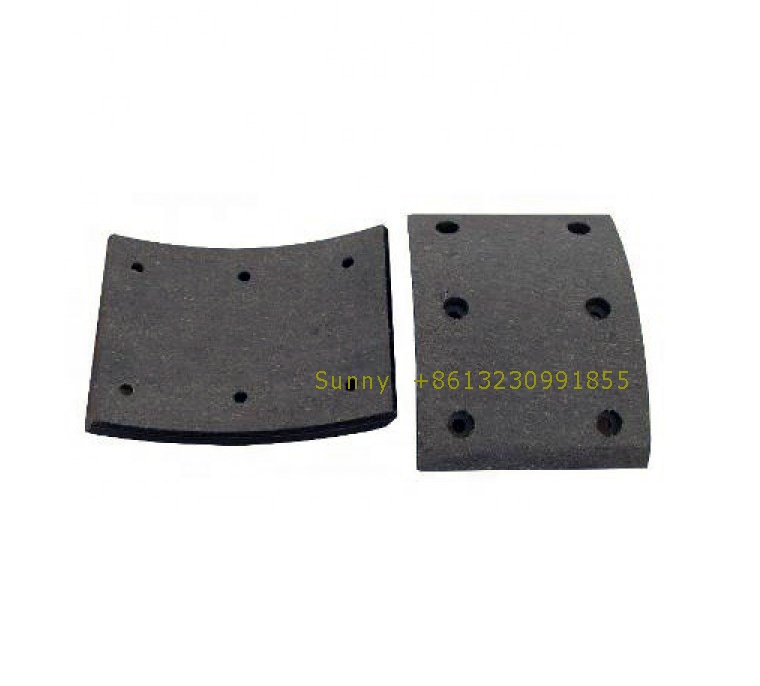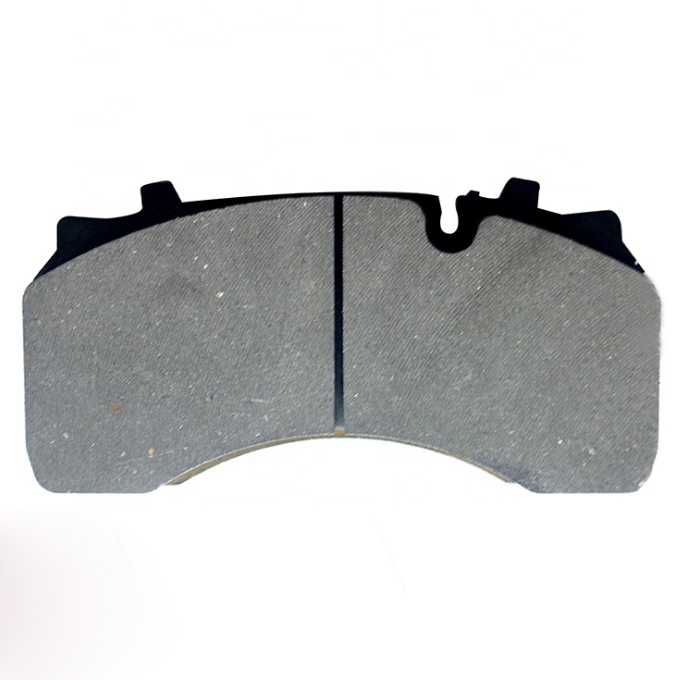What Are the Truck Parts That Need Frequent Replacement?
2024,12,20
The following are some truck parts that are frequently replaced:
I. Parts of the Braking System
- Brake lining & Brake pad
- Background: Brake pads are crucial components of the braking system. When a truck is in operation, frequent braking actions lead to continuous wear on the brake pads. Once the brake pads are worn to a certain extent, the braking performance will deteriorate, posing a safety risk.
- Replacement Cycle: Generally, depending on the truck's usage conditions such as mileage, road conditions, and driving habits, brake pads may need to be replaced every 30,000 to 80,000 kilometers. For instance, trucks operating in mountainous areas, where braking is more frequent, will have a shorter replacement cycle for brake pads.
- Brake disc
- Background: Brake discs work in close conjunction with brake pads. During the braking process, the brake pads exert friction on the brake discs. After prolonged use, brake discs may experience wear, deformation, and other issues. Worn brake discs can affect the smoothness and effectiveness of braking.
- Replacement Cycle: Under normal circumstances, the service life of brake discs is relatively long. They may need to be inspected and replaced as appropriate after 2 to 3 sets of brake pads are replaced. The approximate mileage is around 100,000 to 150,000 kilometers. However, if there are obvious scratches or deformations on the brake discs, they should be replaced promptly.
- Brake Fluid
- Background: Brake fluid serves as the medium for transmitting braking force. It will absorb moisture from the air. As time passes and usage increases, the moisture content in brake fluid rises. Excessive moisture will lower the boiling point of the brake fluid, potentially causing air resistance in the braking system during frequent braking and thus affecting braking performance.
- Replacement Cycle: It is typically recommended to replace brake fluid every 2 to 3 years or every 40,000 to 60,000 kilometers. The specific situation also needs to be determined based on the test results of the brake fluid.
II. Parts of the Engine System
- Oil Filter
- Background: The oil filter's function is to filter impurities in the engine oil, such as metal filings and dust. As the engine runs, the engine oil circulates continuously, and the filter gradually becomes clogged. Once the filter is clogged, the filtering effect of the engine oil deteriorates, affecting the engine's lubrication and heat dissipation.
- Replacement Cycle: Generally, the oil filter is replaced simultaneously when the engine oil is changed. For trucks, the replacement cycle of engine oil may be about 10,000 to 20,000 kilometers, depending specifically on the type of engine oil used (mineral oil, semi-synthetic oil, or fully synthetic oil) and the engine's working conditions.
- Air Filter
- Background: The air filter is responsible for filtering the air entering the engine. If the air filter becomes clogged, the amount of air entering the engine will decrease, resulting in an imbalanced fuel-air mixture ratio, reducing the engine's power output and increasing fuel consumption simultaneously.
- Replacement Cycle: The replacement cycle varies depending on the driving environment. In dusty environments, it may need to be replaced every 10,000 to 20,000 kilometers; in environments with better air quality, replacement every 30,000 to 40,000 kilometers is acceptable.
- Spark Plugs (Fuel Injectors for Diesel Engines)
- Background: For trucks with gasoline engines, spark plugs generate electric sparks to ignite the mixture. As usage time increases, the electrodes of spark plugs wear out, and the ignition energy weakens, leading to issues such as difficulty in starting the engine, reduced power, and increased fuel consumption. For diesel engines, fuel injectors inject fuel into the combustion chamber. Due to factors such as diesel quality and the combustion process, fuel injectors are prone to clogging or wear.
- Replacement Cycle: For spark plugs in gasoline engines, they are generally replaced every 30,000 to 60,000 kilometers. For fuel injectors in diesel engines, they need to be inspected, cleaned, and replaced as necessary according to the usage situation, probably every 50,000 to 100,000 kilometers.
- Shock Absorbers
- Background: Shock absorbers can cushion the vibrations generated by the uneven road surface during truck driving, ensuring the vehicle's smoothness and comfort. After long-term use, the oil seals inside shock absorbers may be damaged, resulting in shock absorber oil leakage or a decline in damping performance.
- Replacement Cycle: Generally, they may need to be replaced when the mileage is about 80,000 to 100,000 kilometers. However, if the vehicle frequently travels on poor road conditions and the shock absorbers have obvious oil leakage, abnormal noises, or other situations, they should be replaced promptly.
- Tires
- Background: Tires are the only parts of a truck that contact the ground. During driving, tires will be continuously worn and may also be damaged by factors such as nails and bulges. Excessive tire wear will affect the vehicle's handling performance and driving safety.
- Replacement Cycle: It is determined according to the degree of tire wear. Generally, when the tire tread is worn to the specified wear mark (usually 1.6 mm), it needs to be replaced. Under normal usage conditions, truck tires may be able to travel about 80,000 to 100,000 kilometers. However, if the truck is often overloaded, speeds excessively, or drives on roads with poor conditions, the replacement cycle of tires will be shortened.
IV. Parts of the Electrical System
- Battery
- Background: The battery provides power for the truck's starting and electrical equipment. As usage time increases, the plates of the battery will gradually sulfide, resulting in a decline in battery capacity. Moreover, in cold weather, the battery's performance will be more affected.
- Replacement Cycle: Generally, the battery's service life is about 2 to 3 years. However, if the vehicle often makes short trips, starts frequently, or the battery has a power shortage or other issues, it may need to be replaced in advance.
- Light Bulbs
- Background: During the use of various lamps on the truck (such as headlights, taillights, turn signals, etc.), the light bulbs may be damaged due to factors such as filament aging and vibration. The normal operation of the lamps is crucial for driving safety.
- Replacement Cycle: There is no fixed replacement cycle. Light bulbs should be replaced in a timely manner when damaged. However, the working conditions of light bulbs can be checked regularly, generally once every 1 to 2 years.




